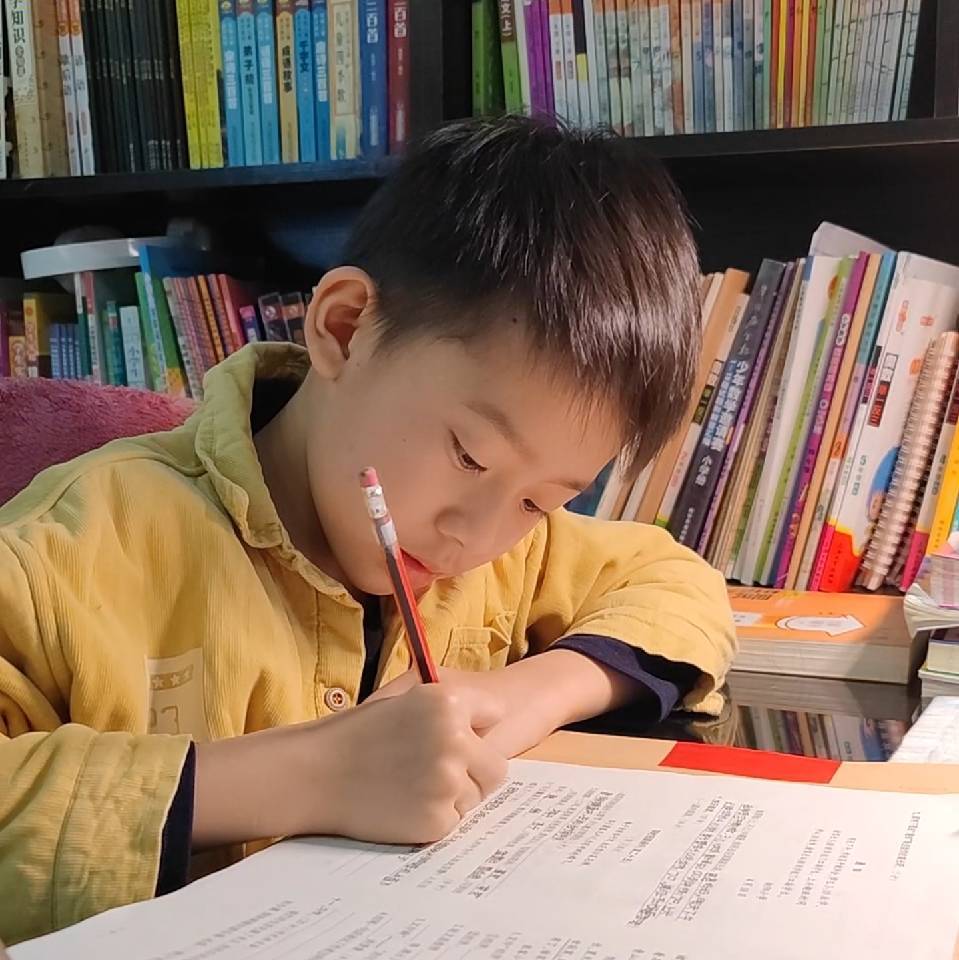“动词 + 介词/副词”结构:Go与Go to等
go:侧重动作本身,或用于动名词、形容词搭配,后面接副词时不加“to”。
go to:后接具体地点名词,表示“前往某地”,是更常见的表达地点的结构。
一、“go”的用法
作为不及物动词
表示“去、走、前往”:强调动作本身,后面不直接接具体地点(除非地点是副词,如home、there、here等)。
例:I often go by bike.(我经常骑自行车去。)
例:Let’s go!(我们走吧!)
用于固定搭配或短语
go + 动名词:表示“去做某事”,多用于休闲、运动类活动。
例:go swimming(去游泳)、go fishing(去钓鱼)、go hiking(去徒步)。
go + 形容词:表示“变得……”,通常指事物向不好的方向变化。
例:The milk went bad.(牛奶变坏了。)
例:Leaves go yellow in autumn.(秋天树叶变黄。)
作为名词:表示“尝试、轮到的机会”。
例:Have a go at solving the problem.(试着解决这个问题。)
二、“go to”的用法
表示“去某个具体地点”:“to”为介词,后接名词或名词短语(如学校、公园、国家等)。
例:I go to school at 7:00 every day.(我每天7点去学校。)
例:She wants to go to Paris for vacation.(她想去巴黎度假。)
用于固定短语
go to bed:表示“上床睡觉”。
例:It’s time to go to bed.(该睡觉了。)
go to work:表示“去上班”。
例:He goes to work by bus.(他乘公交车去上班。)
go to school:表示“去上学”(强调“上学”的行为,而非具体地点)。
例:Children go to school at the age of six in many countries.(在许多国家,孩子六岁上学。)
特殊情况
当地点是副词时,不用“to”,如“go home”(回家)、“go there”(去那里)、“go here”(来这里)。
固定搭配的习惯用法
有些短语中“go to”后的名词前不加冠词,如“go to hospital”(去医院看病)、“go to church”(去教堂做礼拜),但如果是指具体的建筑物,可能加冠词,如“go to the hospital”(去医院这个地方,不一定是看病)。
在英语中,类似“go + 介词/副词”或“动词 + to + 名词”的组合非常常见,它们往往构成固定短语或表达特定含义。
三、“动词 + 介词/副词”结构
这类组合中,动词与介词/副词结合后,含义可能与原动词不同,需注意积累。
1. come
come in:进来
例:Come in, please.(请进。)
come on:加油;快点
例:Come on! You can do it.(加油!你能做到的。)
come from:来自
例:Where do you come from?(你来自哪里?)
2. look
look at:看
例:Look at the blackboard.(看黑板。)
look for:寻找
例:I’m looking for my keys.(我在找钥匙。)
look after:照顾
例:She looks after her grandmother.(她照顾奶奶。)
3. take
take off:起飞;脱下
例:The plane will take off at 9 am.(飞机上午9点起飞。)
例:Take off your coat.(脱下外套。)
take care of:照顾
例:Take care of yourself.(照顾好自己。)
4. get
get up:起床
例:I get up at 6:30.(我6点半起床。)
get on/off:上车/下车
例:Get on the bus.(上车。)
例:Get off at the next stop.(下一站下车。)
四、“动词 + to + 名词”结构
这类组合中,“to”通常作为介词,后接名词或动名词,表示动作的对象或方向。
1. give
give sth. to sb.:给某人某物
例:Give the book to me.(把书给我。)
2. listen
listen to:听
例:Listen to music.(听音乐。)
3. talk/speak
talk to sb.:和某人谈话(单向)
例:She talked to her teacher.(她和老师谈了话。)
speak to sb.:对某人说话
例:Don’t speak to strangers.(不要和陌生人说话。)
4. belong
belong to:属于
例:This book belongs to me.(这本书是我的。)
5. pay attention to
注意
例:Pay attention to your pronunciation.(注意你的发音。)
五、特殊结构:动词 + 副词 + to + 名词
这类组合较为复杂,需注意副词与动词的搭配,以及“to”的后续内容。
1. go back to
回到(某地/某种状态)
例:Go back to your seat.(回到你的座位。)
例:He went back to work after illness.(他病后回去工作了。)
2. return to
返回;归还
例:She returned to her hometown.(她回到了家乡。)
例:Return the book to the library.(把书还给图书馆。)
六、常见错误提醒
1. “to”的省略
有些动词后接“home/here/there”等副词时,不加“to”,如:
正确:go home / come here / return home
错误:go to home / come to here
2. 固定搭配的特殊含义
有些组合的含义并非字面意思,需单独记忆,如:
look forward to:期待(to为介词,后接动名词)
例:I’m looking forward to seeing you.(我期待见到你。)
get used to:习惯(to为介词,后接动名词或名词)
例:He got used to the weather here.(他习惯了这里的天气。)
英语基础
- 小学英语-中考英语-高考英语-大学英语
- 中考真题:2023年广东中考英语试题
- 中考真题:2024年广东中考英语试题
- 中考真题:2025年广东中考英语试题(待续)
- 中考真题:2026年广东中考英语试题(待续)
- 中考英语:听力、单项、完形、词汇、阅读、短文
- 英语课堂用语
- 动词原型、三单、现分、过去式、过分、不定式、动名词
- “动词 + 介词/副词”结构:Go与Go to等
- 中考英语核心单词
- 深入理解英语句子结构
- 词性:名代形副动,数介连叹助
- 名词:可数名词的数、名词所有格
- 名词:普通名词、专用名词
- 名词:不可数名词
- 名词:可数名词(复数形式变化规则)
- 名词:集体名词
- 名词:名词的所有格
- 名词:高频名词
- 名词:名词的单复数形式
- 名词:常用的不规则名词复数形式
- 名词:名词的句法功能
- 名词:名词性数的一致规则
- 名词:名词的性(阳性、阴性、中性)
- 代词:代词分类、代词用法
- 代词:人称代词(主格、宾格、物主、反身)
- 代词:指示代词(this/that/these/those)
- 代词:疑问代词(who/whom/what/which)
- 代词:不定代词(some/any/many/much/few)
- 代词:关系代词(who/whom/whose/that)
- 冠词:不定(a/an)定冠词(the)零冠词
- 零冠词:季节、月份、星期、节日、运动等名词
- 形容词:作用、分类、比较级、位置
- 形容词的作用:形容词作定语+名词
- 形容词的作用:系动词+形容词作表语
- 形容词的作用:作宾语补足语
- 形容词的分类:性质形容词
- 形容词的分类:状态形容词
- 形容词的分类:颜色形容词
- 形容词的分类:限定形容词
- 形容词的比较:比较级、最高级
- 副词:特点、作用、分类
- 副词:时间、地点、方式、程度、频率
- 数词:基数词、序数词
- 量词(50个高频量词的使用)
- 介词:位置、时间、方式、手段、原因、目的
- 动词:动名词与现在分词的区别
- 动词:动词语法概述
- 动词:及物动词与不及物动词的区别
- 动词:延续性动词与非延续性动词的区别
- 动词:系动词(主语+系动词+表语)
- 动词:助动词 be/do/have/will/can
- 动词:情态动词 can/may/shall/must
- 动词:动词的形式
- 动词:动词的16种时态(概述)
- 第01时态:一般现在时:do/does
- 第02时态:一般过去时:did
- 第03时态:一般将来时:will + 动词原形
- 第04时态:一般过去将来时:would + 动词原形
- 第05时态:现在进行时:be(am/is/are)+ 现在分词
- 第06时态:过去进行时:was/were + 现在分词
- 第07时态:将来进行时:will be + 现在分词
- 第08时态:过去将来进行时:would be + 现在分词
- 第09时态:现在完成时:have/has + 过去分词
- 第10时态:过去完成时:had + 过去分词
- 第11时态:将来完成时:will have + 过去分词
- 第12时态:过去将来完成时:would have + 过去分词
- 第13时态:现在完成进行时:have/has been + 现在分词
- 第14时态:过去完成进行时:had been + 现在分词
- 第15时态:将来完成进行时:will have been + 现在分词
- 第16时态:过去将来完成进行时:would have been + 现在分词
- 比较 4 种(一般)时态
- 比较 4 种(进行)时态
- 比较 4 种(完成)时态
- 比较 4 种(完成进行)时态
- 比较 4 种(现在)时态
- 比较 4 种(过去)时态
- 比较 4 种(将来)时态
- 比较 4 种(过去将来)时态
- 语态:什么是语态?主动语态、被动语态
- 语态:主动语态
- 语态:被动语态
- 语态:被动语态的否定形式
- 句子成分:句子成分划分
- 句子成分:主语
- 句子成分:谓语
- 句子成分:宾语
- 句子成分:表语
- 句子成分:定语
- 句子成分:状语
- 句子成分:补语
- 非谓语动词:不定式、动名词、分词
- 英语:连词 and or although but
- 英语:感叹词
- 句子:主谓一致
- 句子:句子的分类
- 句子:肯定陈述句、否定陈述句
- 句子:一般疑问句
- 句子:特殊疑问句
- 从句:名词性从句、形容词性从句、副词性从句
- 名词性从句:主语、宾语、表语、同位语从句
- 名词性从句:主语从句
- 名词性从句:宾语从句
- 名词性从句:表语从句
- 名词性从句:同位语从句
- 直接引语和间接引语
- 形容词性从句:定语从句
- 副词性从句:状语从句
- 副词性从句-状语从句:时间状语从句
- 地点状语从句:where、wherever
- 原因状语从句:because、since、as
- 条件状语从句:if、unless、as long as/so long as
- 目的状语从句:so that、in order that
- 结果状语从句:so...that...、such...that...
- 让步状语从句:although/though、while
- 方式状语从句:as、as if/as though
- 比较状语从句:as...as...、not as/so...as...、than
- 虚拟语气
- There be 句型
- 特殊英语句子结构:倒装
- 特殊英语句子结构:强调
- 特殊英语句子结构:省略
